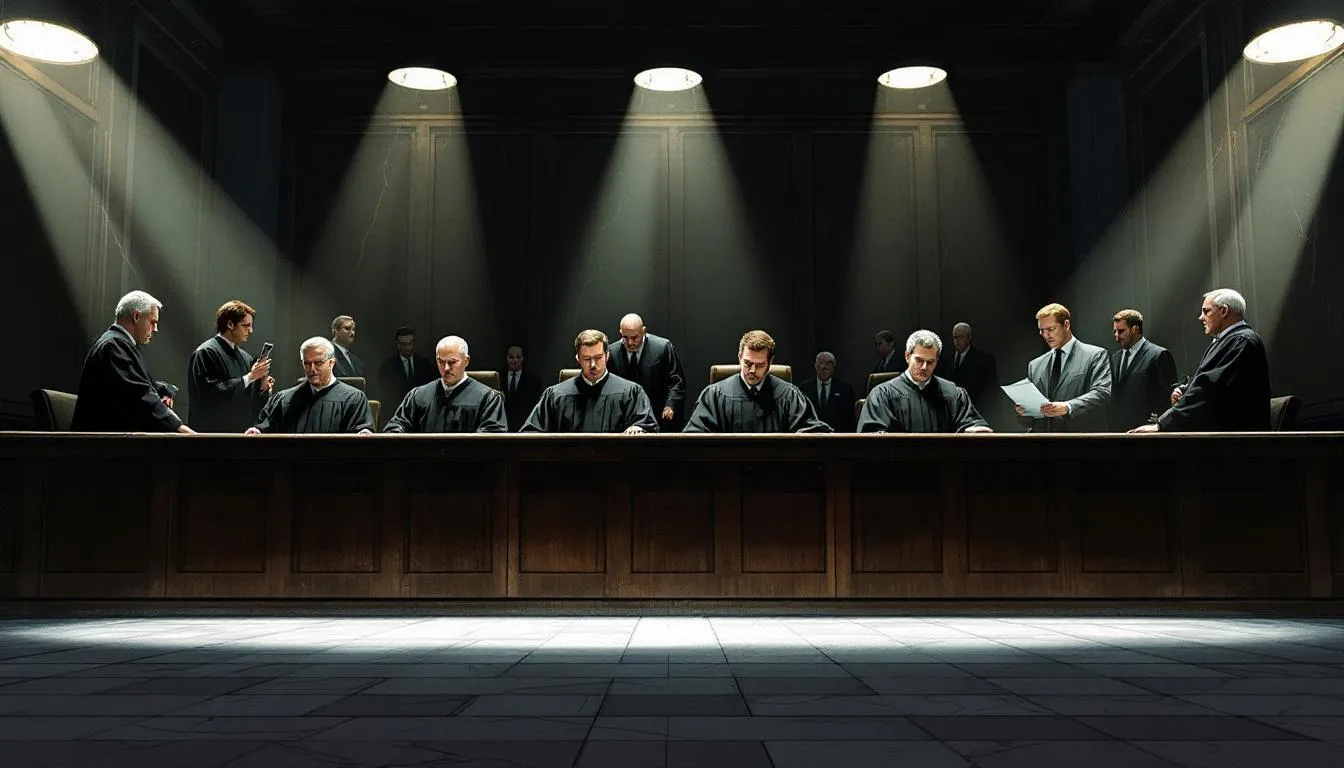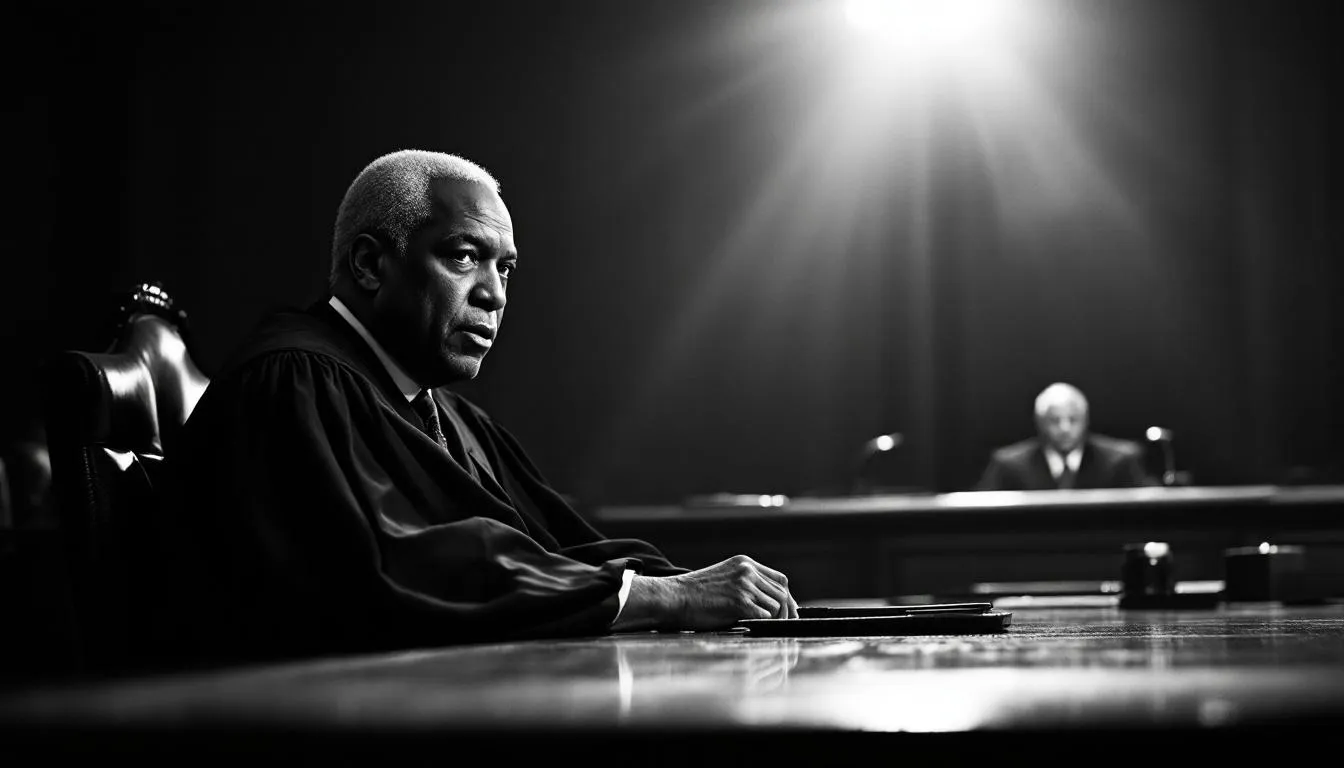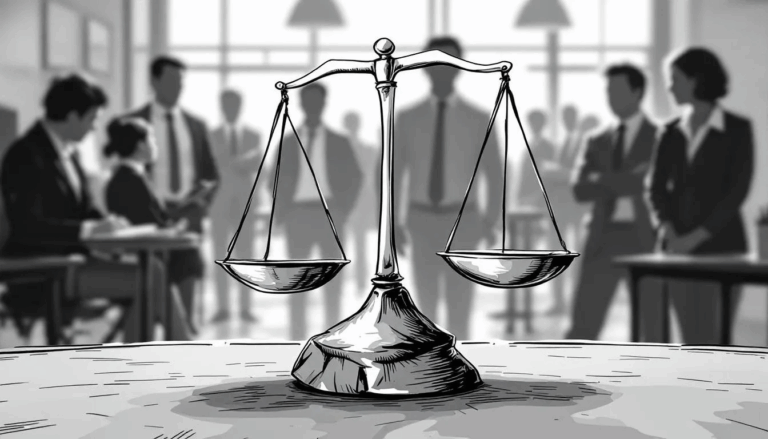The Supreme Court latest news is that it has made a pivotal decision affecting employment law. On Thursday, June 5, 2025, it declared that majority-group plaintiffs don’t need to meet higher standards when alleging discrimination under Title VII of the Civil Rights Act. The Supreme Court issued this decision during its current term. This big decision impacts future reverse discrimination claims. Dive deeper to understand the case details and the broader implications of the latest news on the Supreme Court.
Introduction to Employment Law
Employment law serves as the backbone of workplace rights and responsibilities, shaping how employers and employees interact across the United States. The Supreme Court has long been at the forefront of defining these relationships, issuing landmark rulings that clarify the reach and application of federal law. For example, on June 12, 2025, the Supreme Court delivered a unanimous decision that further clarified the standards for discrimination claims, reinforcing the Court’s pivotal role in this area.
Beyond the Supreme Court, the federal Circuit Appeals Courts also play essential roles in interpreting and enforcing employment law, ensuring that federal law is applied consistently across different jurisdictions. These courts review cases that test the boundaries of employment protections, from wage disputes to workplace discrimination, and their decisions often set important precedents.
Recent years have seen significant shifts in employment law, particularly during the Trump administration, which introduced policies aimed at boosting government efficiency. These efforts have influenced how courts approach employment disputes, with a focus on streamlining processes and clarifying the scope of legal protections. As a result, the landscape of employment law continues to evolve, shaped by the rulings and jurisdiction of the Supreme Court and other federal courts, as well as the ongoing efforts of government officials to refine and enforce these critical regulations. If you think that you have an employment law claim, you can click here for a free online tool that will help you evaluate your claim.
Background and History
The roots of employment law in the United States stretch back to the early 20th century, when state courts began to recognize the need for basic worker protections. Over time, the high court has played a transformative role, issuing opinions that have expanded the rights of employees and clarified the responsibilities of employers. Landmark cases have established foundational principles such as minimum wage, overtime pay, and anti-discrimination protections.
The evolution of employment law is marked by a series of pivotal court decisions. For instance, when the Supreme Court recently lifted a lower court order in a high-profile case, it underscored the dynamic nature of this legal field. The justices are continually called upon to resolve questions about the intent and application of employment statutes, issuing opinions that shape the direction of workplace law for years to come.
The Department of Labor is another key player, tasked with enforcing employment laws and helping to define the jurisdiction of courts in employment-related disputes. As new cases arise and courts issue fresh rulings, the legal landscape adapts to address emerging issues and societal changes. This ongoing process ensures that employment law remains responsive to the needs of both workers and employers, reflecting the complexities of the modern workplace.
Supreme Court Latest News: Key Takeaways from Big Employment Law Case
- The Supreme Court’s ruling in Ames v. Ohio Department of Youth Services removes extra evidence requirements for majority-group plaintiffs in discrimination cases, leveling the playing field.
- Justice Clarence Thomas criticized the existing framework for discrimination claims, suggesting it complicates litigation and may lead to future legal changes.
- This decision ensures all discrimination claims, regardless of the plaintiff’s group, will be evaluated under the same standards, reinforcing equal protection under the law.
Reverse Discrimination Case: Ames v. Ohio Department of Youth Services

Marlean Ames, a dedicated employee with a 15-year career at the Ohio Department of Youth Services, found herself at the center of a legal battle when she alleged that she faced workplace bias due to her heterosexual orientation. The department oversees youth programs and services across various districts in Ohio, ensuring consistent support and resources for young people throughout the state. Starting as an executive secretary in 2004, Ames worked her way up to the role of program administrator, demonstrating her commitment and capability. However, the conflict that led to her lawsuit began in 2019 when she sought a new place within the department, which raised concerns about the connection among officials and people.
Ames’s application for the new role was not only unsuccessful, but she was also demoted to a previous position with a significantly lower hourly salary. In her various roles, Ames contributed to education-related initiatives within the department, supporting programs designed to improve outcomes for youth. Feeling that her sexual orientation was the reason for this unfair treatment, Ames filed a lawsuit, claiming employment discrimination. Her allegations were initially dismissed by the 6th Circuit Court of Appeals, which stated that her claim could not proceed unless she provided ‘background circumstances’ supporting her allegations of reverse discrimination.
The Supreme Court, however, took a different view. In its unanimous ruling on June 5, 2025, the Court eliminated the requirement for majority-group plaintiffs to provide additional evidence to support their discrimination claims under Title VII of the Civil Rights Act on that day. The Court found that the text of Title VII does not support imposing extra burdens on majority-group plaintiffs. This decision was a significant departure from the previous standard, which required majority-group plaintiffs to meet a higher evidentiary bar to suggest that discrimination against them was plausible.
The ruling also rejected the ‘background circumstances’ test, which had been used to determine the validity of reverse discrimination claims. The Court’s decision stated that imposing special requirements on majority-group plaintiffs is inconsistent with the statute’s intent. The Supreme Court sent Ames’s case back to the lower courts, emphasizing that the federal appeals court had set an unduly high standard for her reverse discrimination appeal.
This landmark ruling has far-reaching implications. Employers must now evaluate discrimination claims brought by majority-group plaintiffs under the same evidentiary framework as those brought by minority-group plaintiffs. The decision also aligns with the EEOC’s position that there is no such thing as “reverse” discrimination, only discrimination. For Ames, this ruling means her case will receive a fairer review in the lower courts, potentially leading to a different outcome.
The Ames case is not just a victory for Marlean Ames but a significant step toward ensuring that all individuals, regardless of their group membership, receive equal protection under the law. The Supreme Court’s ruling has set a precedent that will impact how similar cases are handled in the future, leveling the playing field for majority-group plaintiffs who believe they have been unfairly treated.
Government Policies and Employment Law
Government policies are a driving force behind the development and enforcement of employment law, with the Supreme Court and appeals court frequently called upon to assess the authority and impact of these policies. Recent rulings have highlighted the complex relationship between federal, state, and local regulations, especially when courts are asked to review challenges to state laws that affect workplace rights.
The Supreme Court’s authority to interpret the scope of employment law protections is particularly significant for members of protected groups, including individuals with disabilities. In a notable opinion issued on Monday, June 12, 2025, the Court addressed claims that tested the boundaries of these protections, setting a precedent that will influence thousands of Americans and their ability to seek justice in employment disputes.
As the president and Congress introduce new regulations and levy additional requirements on employers, the bench of judges across the country must interpret and apply these evolving laws. The news and press play a vital role in keeping the public informed about these changes, with outlets like Reuters providing in-depth coverage of major Supreme Court cases and their implications.
Ultimately, the interplay between government efforts, court rulings, and public awareness ensures that employment law remains a dynamic and responsive field. Each new case, opinion, and challenge helps to refine the legal framework that protects workers and guides employers, shaping the future of the American workplace.
The Role of the Supreme Court in Employment Discrimination

The Supreme Court plays a crucial role in interpreting federal law and resolving questions of national importance, particularly in the realm of employment discrimination. Title VII of the Civil Rights Act prohibits discrimination against any individual based on race, color, religion, sex, or national origin. The Supreme Court’s recent decision in the Ames case reaffirms that these protections apply equally to all individuals, including those from majority groups.
Historically, the Court has been tasked with clarifying the scope and intent of federal employment discrimination laws. The Supreme Court concluded in the Ames case that majority-group plaintiffs should not face a higher evidentiary standard than minority plaintiffs. This decision underscores the complexities of employment discrimination claims, especially those involving allegations of bias based on sexual orientation.
The high court’s ruling in the Ames case is a significant step toward ensuring government efficiency and fairness in the judicial process. The Court’s elimination of additional burdens on majority-group plaintiffs has streamlined the legal framework for discrimination claims under Title VII. This change should reduce the time and effort needed to resolve such cases, offering a clearer path for plaintiffs seeking justice, while also addressing the potential for a levy on resources.
The implications of the Supreme Court’s ruling extend beyond the federal level. State court and lower federal courts must now align their standards with this new precedent, ensuring that all discrimination claims are evaluated fairly and consistently. This alignment is crucial for maintaining the integrity and authority of the judicial system, as it ensures that the intent of federal law is upheld across all jurisdictions.
As we look to the future, the Supreme Court’s decision in the Ames case is likely to influence the production and resolution of employment discrimination suits. Employers and legal professionals must stay informed about these changes and news to navigate the evolving legal landscape effectively. The Ames ruling serves as a reminder that the pursuit of justice and equality under the law is an ongoing issue, requiring vigilance and adaptability from all stakeholders.
Justice Clarence Thomas’s Views on Discrimination Claims

Justice Clarence Thomas, known for his conservative views and willingness to challenge established legal doctrines, has been vocal about his concerns regarding the current framework for discrimination claims. In the context of the Ames case, Thomas questioned the established three-step burden-shifting standard used in discrimination lawsuits. This standard, known as the McDonnell Douglas framework, has been a cornerstone of employment discrimination law for decades.
Thomas suggested that the three-step test lacks a basis in the text of federal employment discrimination law and has proven difficult for courts to apply. He indicated that he might support overruling the three-step test if presented with a relevant case. This opinion reflects his broader judicial philosophy, which often emphasizes a strict interpretation of statutory text and skepticism toward judicially created doctrines.
In his concurrence in the Ames case, Thomas noted that the ‘background circumstances’ test creates unnecessary burdens and confusion in discrimination litigation. Thomas advocates for a more straightforward and textually grounded approach to evaluating discrimination claims by questioning these established standards. This stance aligns with his broader critique of the judiciary’s role in shaping employment law through complex and often convoluted tests and standards.
Thomas’s views on discrimination claims are particularly significant given the current composition of the Supreme Court. His opinions, along with those of other like-minded justices, could shape the Court’s approach to future discrimination cases. Adopting Thomas’s perspective could significantly shift the evaluation and litigation of discrimination claims.
For thousands of Americans who bring discrimination suit each year, these potential changes could have profound implications for disabilities. A move away from the three-step burden-shifting standard could simplify the litigation process and make it more accessible to plaintiffs during this longer period. However, it could also lead to new challenges and uncertainties as courts, litigants, and disputes adapt to a revised legal framework, impacting their efforts.
Summary
The Supreme Court’s decision in the Ames case marks a pivotal moment in employment discrimination law. By eliminating the higher evidentiary standard for majority-group plaintiffs, the Court has reinforced the principle that all individuals deserve equal protection under the law. This ruling not only provides a fairer framework for evaluating discrimination claims but also sets a precedent that will influence future cases and legal strategies.
As we move forward, it is essential for employers, employees, and legal professionals to stay informed about these changes and their implications. The pursuit of justice and equality in the workplace is an ongoing effort, and the Supreme Court’s decision in the Ames case is a significant step in that direction. By understanding and adapting to this evolving legal landscape, we can work toward a more equitable and inclusive society. To learn more about employment law with Punchwork, PLC, you can click here.
Frequently Asked Questions
What is Supreme Court latest news about the federal employment discrimination law?
The Supreme Court clarified that federal employment discrimination law bans intentional discrimination based on race, color, religion, sex, or national origin, ensuring protections for everyone, no matter their background.
What did Justice Clarence Thomas suggest regarding the three-step test for discrimination claims?
Justice Clarence Thomas thinks the three-step test for discrimination claims is shaky since it doesn’t really come from federal law and is tough for courts to work with, hinting he might want to toss it out.
What was the date of the U.S. Supreme Court’s decision regarding “majority group” discrimination claims?
The U.S. Supreme Court’s decision on “majority group” discrimination claims came down on June 5, 2025.
Who was the petitioner in the case Ames v. Ohio Department of Youth Services?
The petitioner in the case Ames v. Ohio Department of Youth Services was Marlean Ames.
What was the basis of Marlean Ames’ lawsuit against the Ohio Department of Youth Services?
Marlean Ames sued the Ohio Department of Youth Services because she claimed they denied her a promotion due to her sexual orientation. That’s just not cool!



